Bothrostoma undulans (Stokes, 1887)
Most likely ID: n.a.
Synonym: Metopus undulans
Sampling location: Purren pond, Simmelried
Phylogenetic tree: Bothrostoma undulans
Diagnosis:
- body elongated oval, posterior end truncated transversely
- length 80–180 µm
- conspicuous paroral membrane parallel to the adoral zone on right side
- adoral zone very broad, narrowing to the mouth opening in mid body
- adoral zone running obliquely over ventral side, bent to left before mouth opening
- contractile vacuole terminal
- macronucleus oval or globular with adjacent spherical micronucleus
- posterior end with long caudal cilia
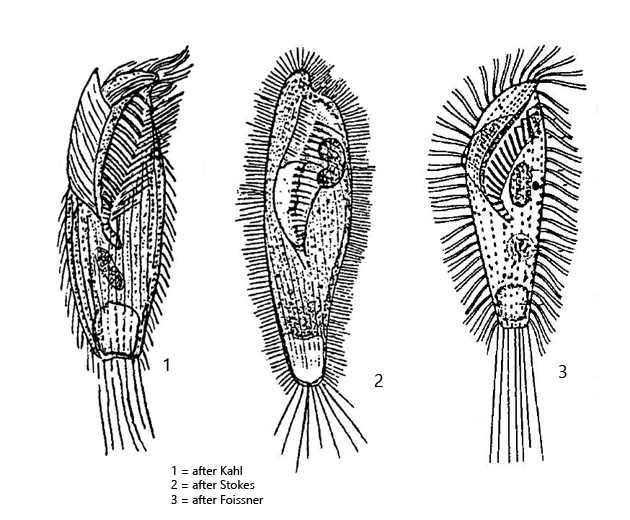
I find Bothrostoma undulans rarely but regularly in the Purren pond and the Simmelried, especially in decaying leaves. The ciliate is very conspicuous by its large, broad adoral zone (s. figs. 1 b and 2 a-c). This runs from left to right diagonally across the ventral side of the cell body and turns to the left just before the mouth opening (s. fig. 2 b). More difficult to recognize is the paroral membrane, which lies like a triangular sail over the adoral zone. The paroral membrane originates on the right side of the adoral zone and runs in parallel to it (s. fig. 2 c). Its complete shape is not easily seen, but the long cilia of the membrane lie like a curtain over the adoral zone in lateral view (s. figs. 1 a and 1 d). The macronucleus was also kidney-shaped in some specimens in my population (s. fig. 3) and enclosed partly the micronucleus. The length and numbers of caudal cilia also appear to be quite variable. I could also observe specimens with much longer caudal cilia than in the specimens shown below. The pellicle is clearly granulated by mucocysts, which are arranged in parallel stripes (s. fig. 4 b). In the cytoplasm I could detect symbiotic bacteria in all specimens, but I did not examine them more closely.
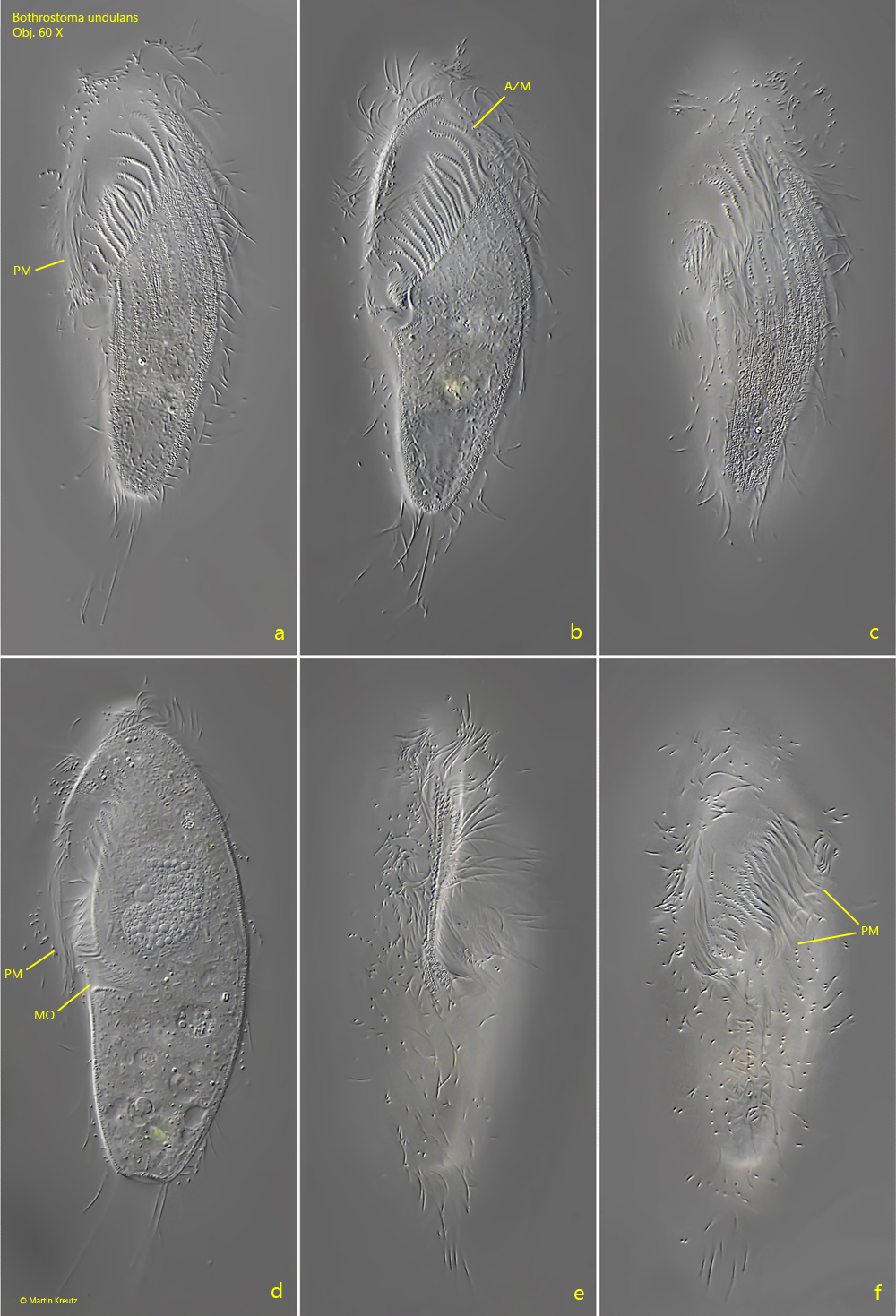
Fig. 1 a-f: Bothrostoma undulans. L = 96 µm. A freely swimming specimen from ventral (a, b, f), left (c, d) and right (e). Note the long cilia of the paroral membrane (PM) covering the adoral zone (AZM). MO = mouth opening. Obj. 60 X.
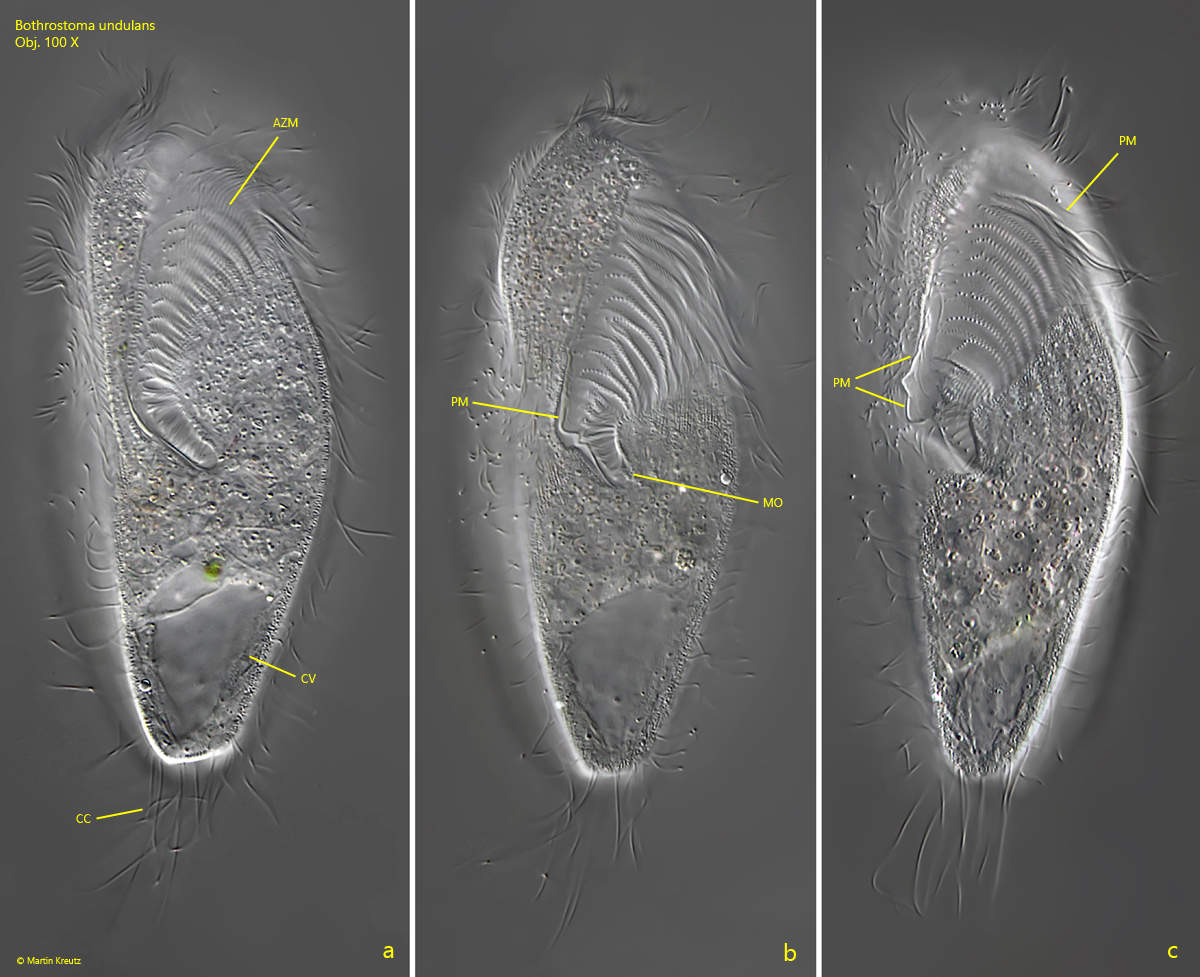
Fig. 2 a-c: Bothrostoma undulans. L = 114 µm. Three focal planes of a freely swimming specimen from ventral. AZM = adoral zone of membranelles, CC = caudal cilia, CV = contractile vacuole, MO = mouth opening, PM = paroral membrane. Obj. 100 X.
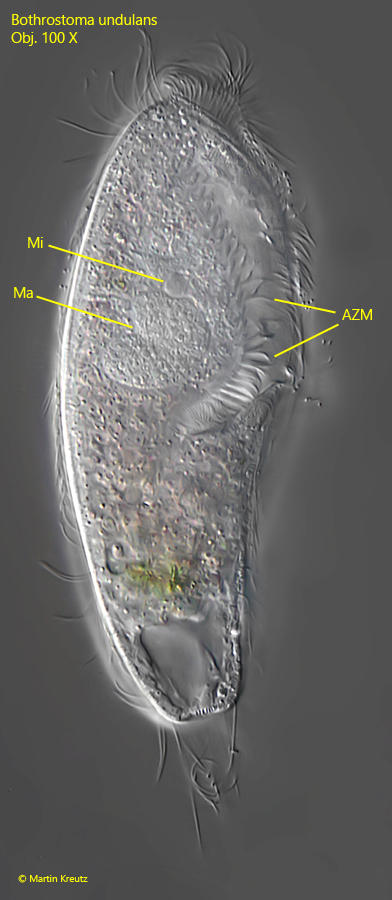
Fig. 3: Bothrostoma undulans. L = 114 µm. The same specimen shown in fig. 2 a-c from right. AZM = adoral zone of membranelles, Ma = macronucleus, Mi = micronucleus. Obj. 100 X.
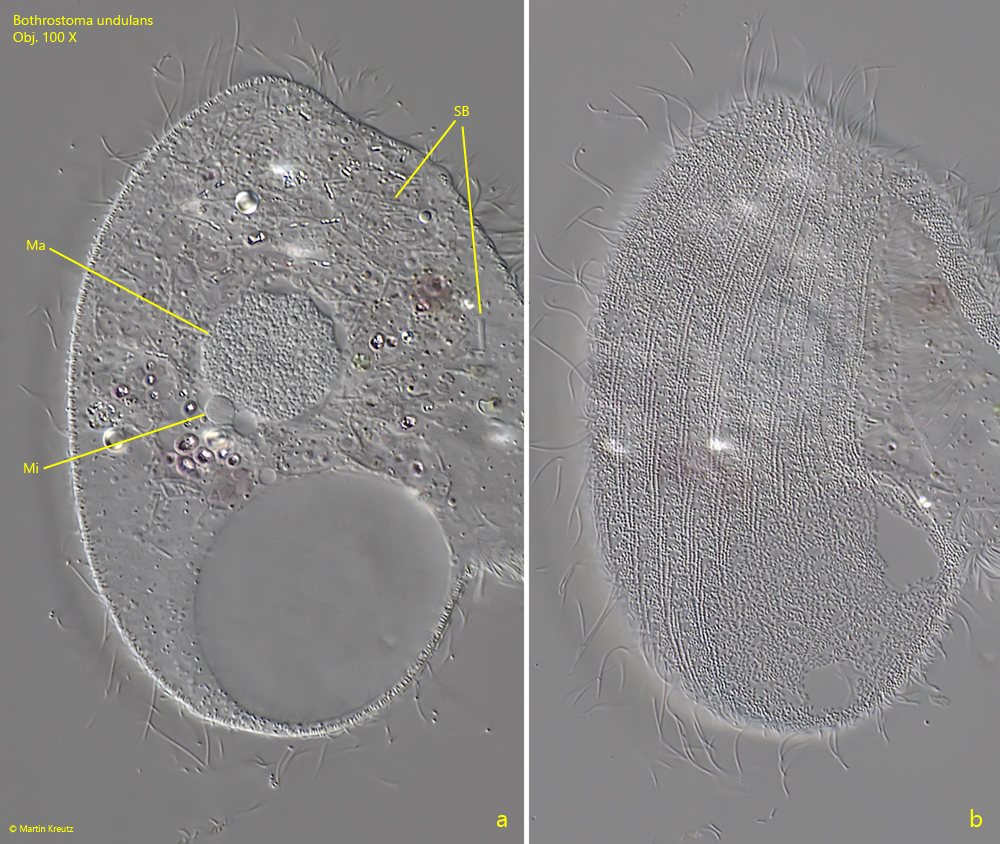
Fig. 4 a-b: Bothrostoma undulans. Two focal planes of the macronucleus (Ma) and micronucleus (Mi) and of the granulated pellicle (b) of a strongly squashed specimen. Inside the cytoplasm scattered symbiotic bacteria (SB) are visible. Obj. 100 X.